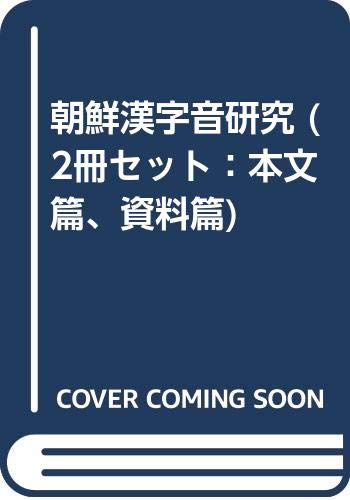2 0 0 0 中期朝鮮語の漢字語アクセント体系
- 著者
- 伊藤 智ゆき
- 出版者
- 学術雑誌目次速報データベース由来
- 雑誌
- 言語研究 (ISSN:00243914)
- 巻号頁・発行日
- vol.116, pp.97-143, 1999
This paper aims to clarify the Sino-Korean accentuation in Middle Korean (MK)By "Sino-Korean", two different classes of material are understood. The first consists of the collections of Chinese characters glossed with Korean (in Hangul script), where the accent of each character is indicated by diacritical dots. The second consists of Chinese loanwords found in the texts in Korean (written entirely in Hangul), where the accent of such words is likewise indicated. The material of the first class is necessarily monosyllabic, while that of the second is often disyllabic. And these two classes show varying accentual notation even for the same character. In this paper the first class is called the SinoKorean Single Character, and the second the Sino-Korean Word.The Chinese characters belonging to the level tone in Ancient Chinese (AC) are marked as the low pitch in MK, and those belonging to the entering tone in AC are marked as the high pitch in MK. On the other hand, those belonging to the rising and departing tones in AC show a split in such a way that most of the characters belonging to the rising and departing tones in AC are marked as the rising pitch in MK (which I call the rising-departing A tone) and the rest of them as the high pitch (which I call the rising-departing B tone). The conditions which determine this split are so far unknown. This paper attempts to show these conditions.The Sino-Korean Word accentuation is the same as that of the Sino-Korean Single Character in the first syllable of a word, but differs in the second syllable in that the rising- departing A tone has the high pitch instead of the rising pitch. The Sino-Korean Words have various types of exceptions to this general tendency, while the Sino-Korean Single Characters are very regular and have few exceptions.In closing, two hypotheses are proposed: First, the Sino-Korean accentuation has the same origin as the Sino-Japanese (Kan-on) accentuation; Second, the regular correspondence between the accent of the Kyeongsang-Do dialect in Modern Korean on the one hand and the AC tones on the other suggest that MK and Modern Kyeongsang-Do dialect has the same origin as far as the Sino-Korean loanwords are concerned, namely they diverged after the Sino-Korean loanwords were introduced.
1 0 0 0 OA 中期朝鮮語の漢字語アクセント体系
- 著者
- 伊藤 智ゆき
- 出版者
- The Linguistic Society of Japan
- 雑誌
- 言語研究 (ISSN:00243914)
- 巻号頁・発行日
- vol.1999, no.116, pp.97-143, 1999-12-25 (Released:2007-10-23)
- 参考文献数
- 63
This paper aims to clarify the Sino-Korean accentuation in Middle Korean (MK)By “Sino-Korean”, two different classes of material are understood. The first consists of the collections of Chinese characters glossed with Korean (in Hangul script), where the accent of each character is indicated by diacritical dots. The second consists of Chinese loanwords found in the texts in Korean (written entirely in Hangul), where the accent of such words is likewise indicated. The material of the first class is necessarily monosyllabic, while that of the second is often disyllabic. And these two classes show varying accentual notation even for the same character. In this paper the first class is called the SinoKorean Single Character, and the second the Sino-Korean Word.The Chinese characters belonging to the level tone in Ancient Chinese (AC) are marked as the low pitch in MK, and those belonging to the entering tone in AC are marked as the high pitch in MK. On the other hand, those belonging to the rising and departing tones in AC show a split in such a way that most of the characters belonging to the rising and departing tones in AC are marked as the rising pitch in MK (which I call the rising-departing A tone) and the rest of them as the high pitch (which I call the rising-departing B tone). The conditions which determine this split are so far unknown. This paper attempts to show these conditions.The Sino-Korean Word accentuation is the same as that of the Sino-Korean Single Character in the first syllable of a word, but differs in the second syllable in that the rising- departing A tone has the high pitch instead of the rising pitch. The Sino-Korean Words have various types of exceptions to this general tendency, while the Sino-Korean Single Characters are very regular and have few exceptions.In closing, two hypotheses are proposed: First, the Sino-Korean accentuation has the same origin as the Sino-Japanese (Kan-on) accentuation; Second, the regular correspondence between the accent of the Kyeongsang-Do dialect in Modern Korean on the one hand and the AC tones on the other suggest that MK and Modern Kyeongsang-Do dialect has the same origin as far as the Sino-Korean loanwords are concerned, namely they diverged after the Sino-Korean loanwords were introduced.
